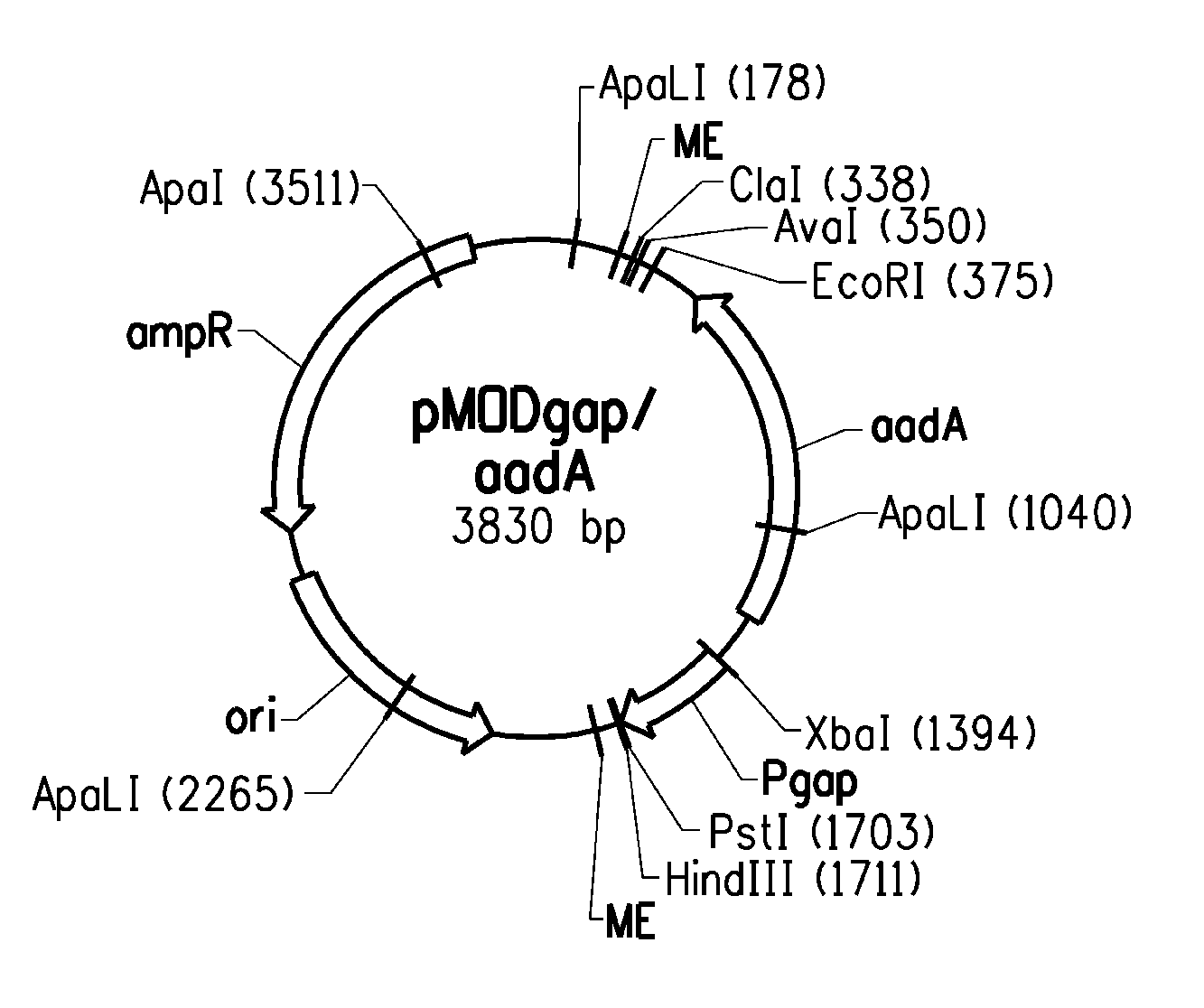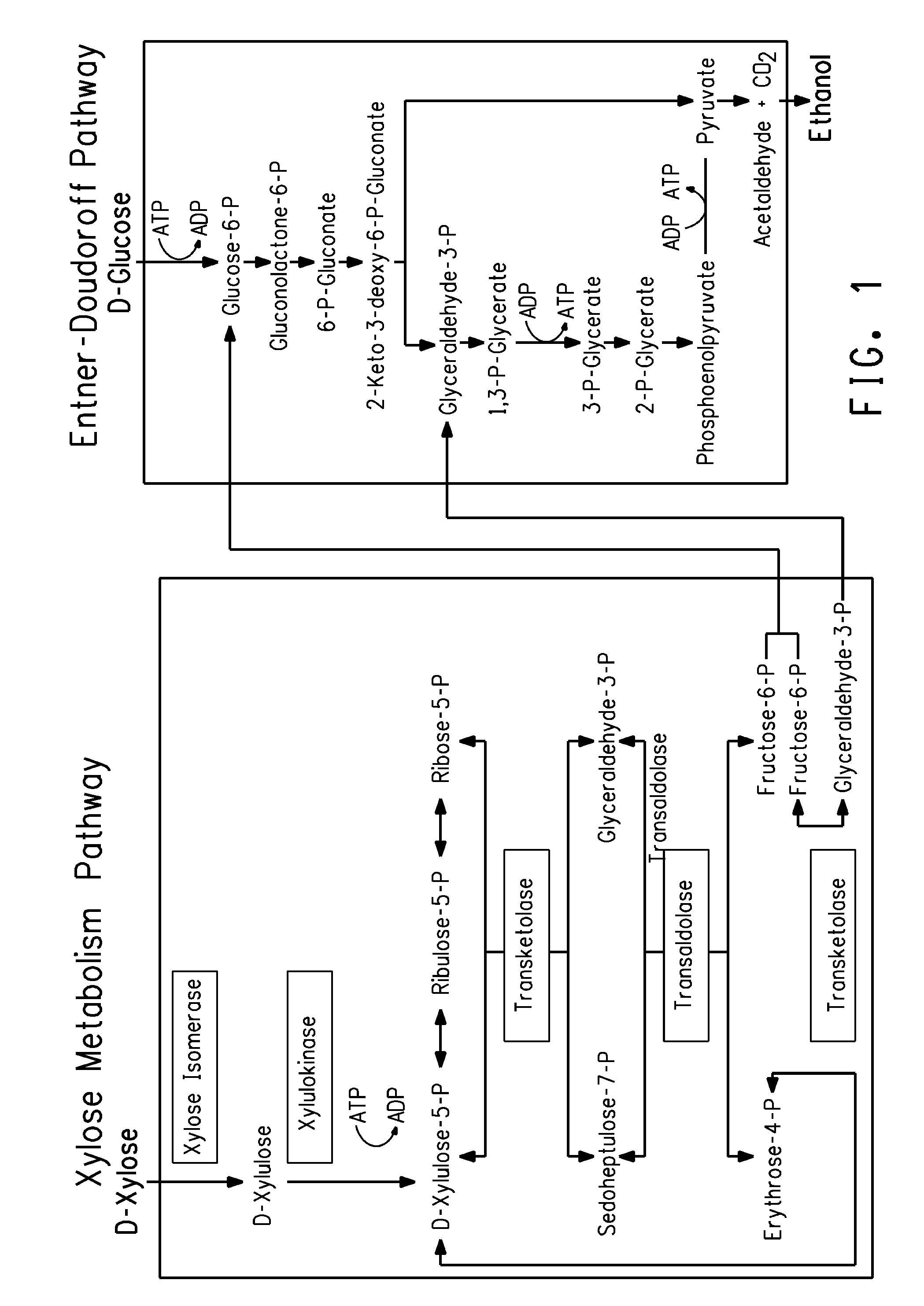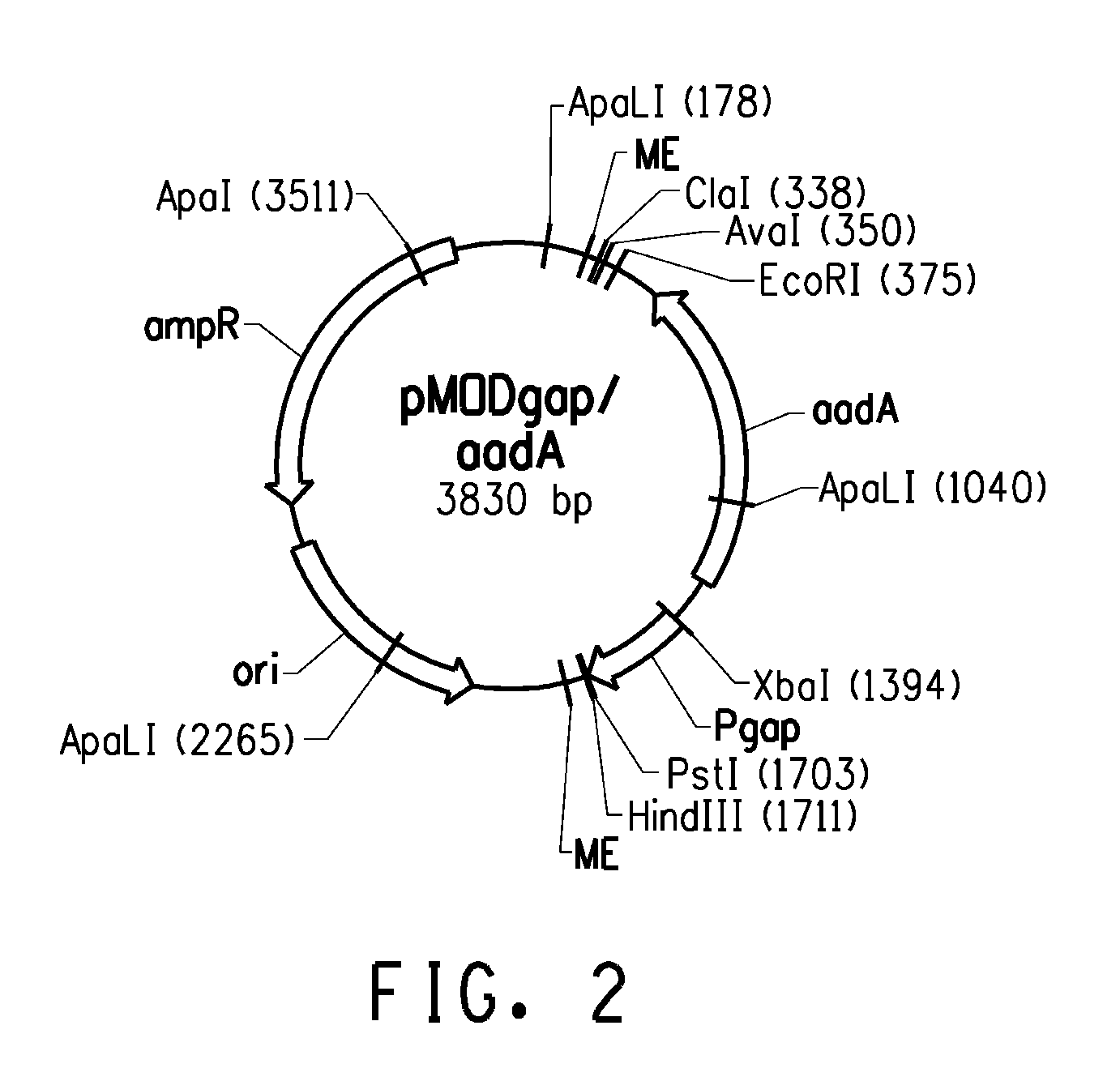Zymomonas with improved ethanol production in medium containing concentrated sugars and acetate
a technology of acetate and ethanol, applied in the field of microorganisms and genetic engineering, can solve the problems of not being able to grow and produce ethanol as well on xylose as on glucose, the strain with the highest resistance to acetate is currently not an option, and the current knowledge is not known. achieve the effect of improving ethanol production, reducing the expression of the endogenous hima gene, and improving ethanol production
- Summary
- Abstract
- Description
- Claims
- Application Information
AI Technical Summary
Benefits of technology
Problems solved by technology
Method used
Image
Examples
example 1
Generation of a ZW801-4 Transposon-Based Knockout / Overexpression Library
[0093]A transposon-based genomic knockout / overexpression library was constructed in a xylose-utilizing recombinant strain of Z. mobilis to screen for acetate-resistant mutants. There were two principle reasons for using a transposon to generate the library. First, it is a completely unbiased approach that does not require any previous knowledge about the genes that play a role in acetate tolerance. Second, it is easy to identify the disrupted gene that is responsible for the desired phenotype since it is “tagged” with a selectable marker. The strain that was used to generate the library was ZW801-4. As described in detail in U.S. patent application No. 60 / 847,813, which is herein incorporated by reference, ZW801-4 was derived from ZW658 (ATCC # PTA-7858) through an intermediate strain, ZW800. The latter strain was constructed by double-crossover insertion from a suicide plasmid of a spectinomycin resistance cass...
example 2
Screening the ZW801-4 Transposon-Based Knockout / Overexression Library for Mutants with Greater Tolerance for Acetate
[0096]The ZW801-4 genomic knockout / overexpression library was screened for acetate-resistant mutants as described below. Before doing this, however, it was important to set up the proper selection conditions for the mutant enrichment process. The goal was to find a concentration of acetate that slowed the growth rate by at least a factor of two, but still allowed the cells to divide for several generations so that faster growing mutants could accumulate. It was also important to do this under process-relevant conditions in a concentrated mixture of glucose and xylose, since previous experiments have shown that osmotic stress and acetate both inhibit growth in a synergistic manner. Finally, controlling the pH was also critical since the real inhibitory compound is acetic acid, and the ratio of the protonated species to the non-protonated species would increase dramatica...
example 3
Genetic Characterization of Mutant Strains
[0101]To see what types of mutants were enriched for during the selection process, single colonies were isolated from the library culture during the second bioreactor experiment (FIG. 4B). An aliquot of the culture was removed at the 24-hr time point and the cells were grown on agar plates that contained MMG media (50 g / L glucose, 10 g / L yeast extract, 5 g / L of tryptone, 2.5 g / L of (NH4)2SO4, 0.2 g / L K2HPO4, and 1 mM MgSO4). Following a 48-hr incubation period at 30° C. under anaerobic conditions, seventeen of the resulting colonies were randomly selected for DNA sequence analysis to determine the site(s) of transposon insertion. The following procedure was used for this analysis. The colonies were diluted in 50 μl of water and genomic DNA was amplified using the GenomiPHI Amplification Kit (GE Healthcare Life Sciences Cat. No. 25-6600-1). Briefly, 1 μl of the cell suspension was added to 9 μl of the Lysis Reagent and the mixture was heated ...
PUM
| Property | Measurement | Unit |
|---|---|---|
| temperature | aaaaa | aaaaa |
| temperature | aaaaa | aaaaa |
| temperature | aaaaa | aaaaa |
Abstract
Description
Claims
Application Information
 Login to View More
Login to View More - R&D
- Intellectual Property
- Life Sciences
- Materials
- Tech Scout
- Unparalleled Data Quality
- Higher Quality Content
- 60% Fewer Hallucinations
Browse by: Latest US Patents, China's latest patents, Technical Efficacy Thesaurus, Application Domain, Technology Topic, Popular Technical Reports.
© 2025 PatSnap. All rights reserved.Legal|Privacy policy|Modern Slavery Act Transparency Statement|Sitemap|About US| Contact US: help@patsnap.com



